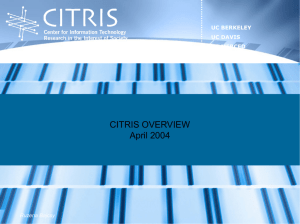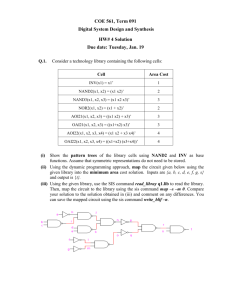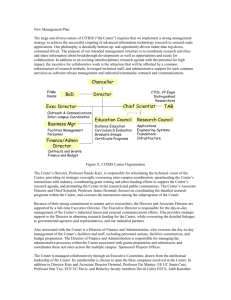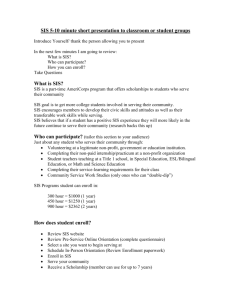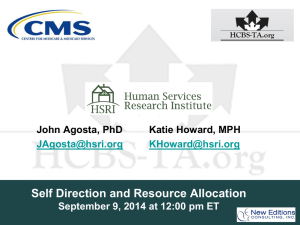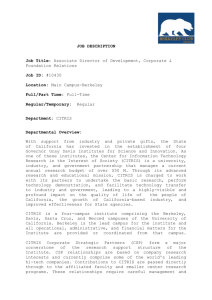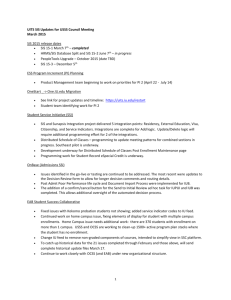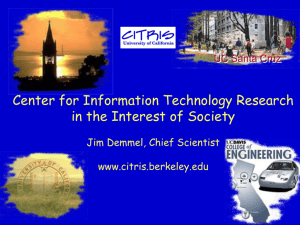Project Summary
advertisement
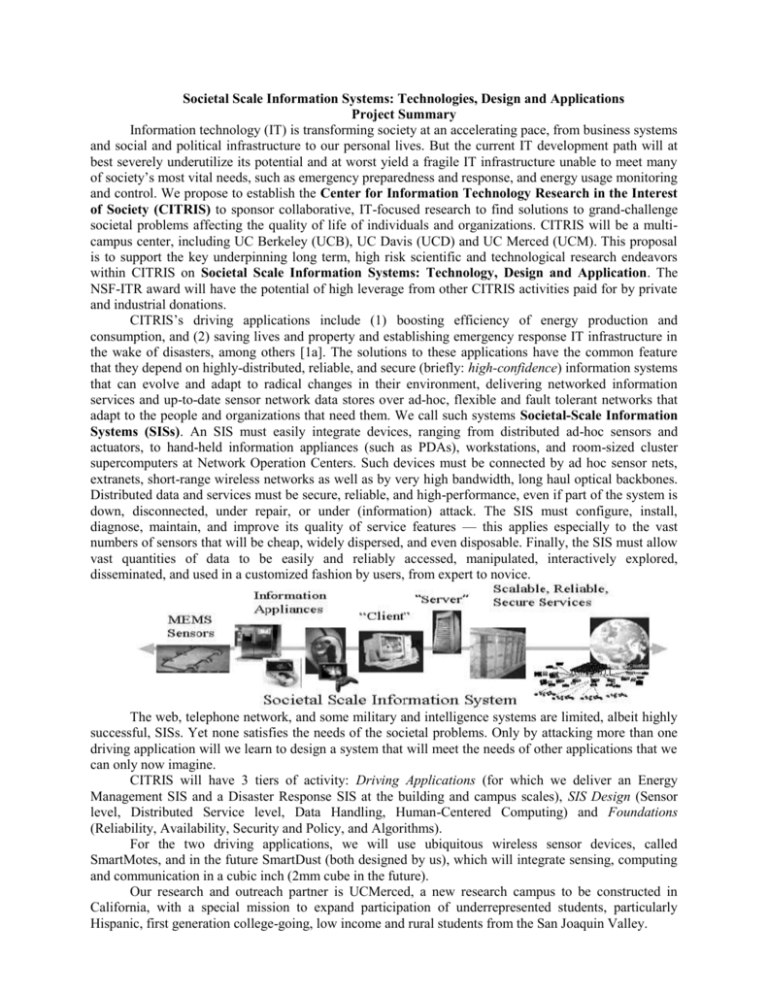
Societal Scale Information Systems: Technologies, Design and Applications Project Summary Information technology (IT) is transforming society at an accelerating pace, from business systems and social and political infrastructure to our personal lives. But the current IT development path will at best severely underutilize its potential and at worst yield a fragile IT infrastructure unable to meet many of society’s most vital needs, such as emergency preparedness and response, and energy usage monitoring and control. We propose to establish the Center for Information Technology Research in the Interest of Society (CITRIS) to sponsor collaborative, IT-focused research to find solutions to grand-challenge societal problems affecting the quality of life of individuals and organizations. CITRIS will be a multicampus center, including UC Berkeley (UCB), UC Davis (UCD) and UC Merced (UCM). This proposal is to support the key underpinning long term, high risk scientific and technological research endeavors within CITRIS on Societal Scale Information Systems: Technology, Design and Application. The NSF-ITR award will have the potential of high leverage from other CITRIS activities paid for by private and industrial donations. CITRIS’s driving applications include (1) boosting efficiency of energy production and consumption, and (2) saving lives and property and establishing emergency response IT infrastructure in the wake of disasters, among others [1a]. The solutions to these applications have the common feature that they depend on highly-distributed, reliable, and secure (briefly: high-confidence) information systems that can evolve and adapt to radical changes in their environment, delivering networked information services and up-to-date sensor network data stores over ad-hoc, flexible and fault tolerant networks that adapt to the people and organizations that need them. We call such systems Societal-Scale Information Systems (SISs). An SIS must easily integrate devices, ranging from distributed ad-hoc sensors and actuators, to hand-held information appliances (such as PDAs), workstations, and room-sized cluster supercomputers at Network Operation Centers. Such devices must be connected by ad hoc sensor nets, extranets, short-range wireless networks as well as by very high bandwidth, long haul optical backbones. Distributed data and services must be secure, reliable, and high-performance, even if part of the system is down, disconnected, under repair, or under (information) attack. The SIS must configure, install, diagnose, maintain, and improve its quality of service features — this applies especially to the vast numbers of sensors that will be cheap, widely dispersed, and even disposable. Finally, the SIS must allow vast quantities of data to be easily and reliably accessed, manipulated, interactively explored, disseminated, and used in a customized fashion by users, from expert to novice. The web, telephone network, and some military and intelligence systems are limited, albeit highly successful, SISs. Yet none satisfies the needs of the societal problems. Only by attacking more than one driving application will we learn to design a system that will meet the needs of other applications that we can only now imagine. CITRIS will have 3 tiers of activity: Driving Applications (for which we deliver an Energy Management SIS and a Disaster Response SIS at the building and campus scales), SIS Design (Sensor level, Distributed Service level, Data Handling, Human-Centered Computing) and Foundations (Reliability, Availability, Security and Policy, and Algorithms). For the two driving applications, we will use ubiquitous wireless sensor devices, called SmartMotes, and in the future SmartDust (both designed by us), which will integrate sensing, computing and communication in a cubic inch (2mm cube in the future). Our research and outreach partner is UCMerced, a new research campus to be constructed in California, with a special mission to expand participation of underrepresented students, particularly Hispanic, first generation college-going, low income and rural students from the San Joaquin Valley.
